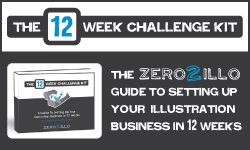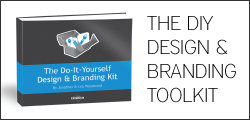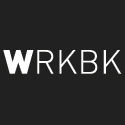This is a guest post by illustrator and author Holly DeWolf
As illustrators we know that promoting yourself is a daily event. If you’re anything like me you are always thinking of new ways to create promotions. Typically we gravitate to the technological side of things. Your website, email, banner ads, pdf portfolios, LinkedIn, Twitter and the many other online sites are great options. Sometimes it nice to shut off and surf the real world. I am here to say that snail mail can be fun again.
Your self promotion is one area of your business where you can give yourself creative freedom. Not only is it the most effective form of creative promotion but it is the most personal and unique way to gain attention to you and your work. Utilizing the mail is is great for many reasons:
- It is tangible. You can hold it your hand.
- It’s memorable. If your potential client loved it they most likely wont forget you.
- It shows off your creative problem solving skills
- It holds more value and meaning than an email or banner ad.
- It is a personal snippet of you and your style.
- You get to create your best work.
- It takes you away from your regular routine.
- It helps you exercise your creative muscle and lets you experiment.
- It lets you spotlight your best work and ideas.
Mailers can be everything from postcards, brochures, newsletters, mini portfolios, contact sheets or something really unique. The idea here is to think out of the norm and get their attention the best way you can. The other idea is to stay out of the recycling bin! If you can get past the mail room, the office manager and into the hands of the intended person it was addressed to, then you are in. After that, your piece has to impress them and hopefully end up on their desk, or filed or pinned on a cork board for display. Treat your work and your promotions with great design and it wont be seen as junk mail.
Your choices
Postcards
These are the most versatile format to work in. It’s a two sided design so you can place an image on the front and all your vital information on the back.
What to include:
Paper is a consideration if you are going to pop it into the mail on it’s own without an envelope. You want to make sure it can take the abuses of the mail route. The maximum legal size for a postcard is 6″ x 4.25″ but you can play with the size if you decide to put it in a envelope instead. When it comes to printing, you can send them out to be printed or you can print them at home. Get creative with imagery and text. Getting it printed at www.moo.com or www.modernpostcard.com
USB Pens
Instead of paper or board you can throw a bit of technology into the mix still by placing all your info on a USB pen. You can create a presentation, or put on a series of pdf’s.
What to include:
Spotlight your best work. It does not need to be your whole portfolio but include what this particular potential client wants to see. Include a Bio and contact information. If you are feeling super creative you can even doll up your usb pen by painting it or putting a sticker on it that you created yourself.
Greeting cards
Absolutely utilize special occasions and holidays to send out one of kind cards. We all love well illustrated designed greetings. Dazzle them at Halloween or Christmas.
What to include:
A great illustration is required. Wit and humor works well for text. Keep it light and keep it creative. Include your contact information on the back. Try a great font that will work with your imagery. Lastly, a great place to get greeting cards printed is www.moo.com
Mini Portfolio Packages
These nifty little packages can house loose prints of your work, a section for your business card, a bio, and something unique like a bookmark. Digital prints work well for this format which can be fairly inexpensive.
What to include:
Have your contact information on each printed sample. Let your creativity take over on the folder itself. Experiment with size, color and paper. This is a great way to dabble into packaging and paper folding.
Contact Sheets
A contact sheet is typically a 8″ x 11″ sheet designed and printed with spotlights of your work all on one page. It is a simple yet effective way to showcase your many talents and it creates easy filing for your audience. These can be printed at home or sent out to your local printer.
What to include:
Make sure you place the right amount of images as to not crowd the page. Try to play up the arrangement with perhaps some bigger images and smaller ones. Utilize negative space to make sure the work can be seen well. Include your contact information, your name, and great a font a two to spice it up.
Handmade books
Little handmade gems like a personalized book will make your work look great. Again, you can get crafty with folding and possibly stitching the book together. Have fun with themes. Create a type of ‘portfolio story’ or create a mock book that could possibly lead to a real book in the future.
What to include:
Put your contact information front and back. Include a bio and your best work. Play with text and fonts. Mix up the types of paper you use and color. Keep it a reasonable size and make sure the pages turn well.
Brochures
These sound super conventional but they don’t have to be. You can fold the paper in 3′s or in half if that works.
What to include:
Throw in well suited text and at least 2 to 3 images depending on the format. Include your contact information and smaller illustrations. A bio works well for this format as well. Print it on great paper with a great font.
Newsletters
If there is something you like to write about or interests you in the illustration field then create a newsletter that can be sent out monthly or bi-monthly. It could focus on creativity to your latest news and career spotlights.
What to include:
Make sure the text is legible. Make sure the text is formatted in an easy follow along way. Play with placement and imagery. Remember, you are an illustrator so make it fun and not too stuffy looking. Include your contact information and possible a hint of the next brochures theme.
Unconventional Formats
If you are feeling super creative and inventive you can always stray away from the norm by creating something completely different. Your themes can be coffee coasters, hand made clocks to specialized post-its with your work on it. The budgets could be quite small to big depending on what you want to do.
What to include:
Being that these will be unconventional in size and materials, make sure that your information does not go lost. If your potential client cannot find the information he/she is looking for they will not be able to contact you. Also make sure you able to send it without it costing you a small fortune. Make it fun. Make it memorable.
Things to consider
Your budget is one of the biggest determining factors in your mail campaign. Printing is not cheap for certain things such as greeting cards. If you are going to use unconventional materials or USB pens then you may want to see if you can get these items in bulk or cheaper online. Handmade is a great budget option. Not only can play with ideas, you can also push your savvy problem solving skills.
Your paper choices will have a huge impact on your promotions. Paper is very tactile. When paper is of good quality and weight it will show and it feel good to the touch. Make sure the paper weight is appropriate to what the promotion piece needs. If you are printing postcards you will need a sturdier paper to handle the busy mail system.
Dealing with printers is not always easy. One thing I have learned right off the hop is this: never assume. When you are about to send a file to a printer or drop off a usb pen to have something printed make sure you know in advance how they would like things formatted. An example I like to use is an illustration I did for a t-shirt. I thought I could just send an old EPS file. Turns out it needed to be vectorized. Ooops!
Always ask and make sure you have an understanding of printing lingo. Always check for spelling errors because that is not their job. And lastly, always ask for a proof print before you ok the final printing.
Your printing and package sizes need to fit into standard mail sizes. If you are not always sure then check out your countries mailing standards and local courier formats. This will prevent any mail coming back or not reaching its destination at all.
Potential List
Before you mail anything you need a list of potentials. These can be found online, directories and in the information sections at the front of magazines. Rule of thumb: make sure you always know who to address the promotion to. Make sure your good stuff gets into the right hands.
Lastly, make sure you spell their name right. Good places to look are the 2010 Artists & Designers Market, company websites, online directories ans specific sites specializing in the market you want to work in such as the Society of Children’s Book Writers and illustrators.
Mail Schedule
After you send out your creative goodies you should make a list. This list will include the date you sent your mail, the addressee and what you sent out. From there you can set up a mailer schedule where you will send out the next batch either every 2 weeks or once a month.
Once items have been sent you want to track how it goes and how well your efforts are being received. This will require a follow up either by phone, email or a nifty response card that you can design and send out after your promotion was mailed. This will lead to a response. This response could be a job, a thank you, your promotion maybe be filed for further consideration or there may not be a response at all.
All this needs to be documented in order to see your progress and what works and what needs to change. Lastly, its a good idea to make a list of how much your mailing campaign cost that way you will be able to budget appropriately for the next mail blitz.
About Holly
Holly DeWolf is an illustrator, author, teacher and mentor. Her work is a whimsical mix of colour and detail that works well in the editorial to children’s publishing markets. Holly recently released her first book Breaking Into Freelance Illustration: the guide for artists, designers an illustrators published by How Books. She currently resides in New Brunswick, Canada.
No related posts.





